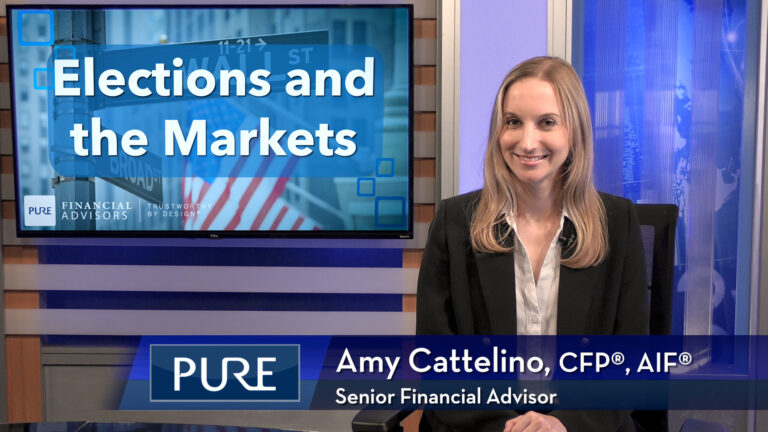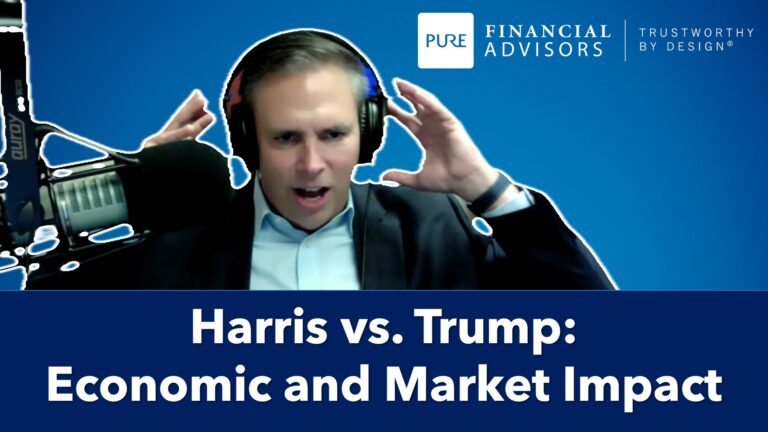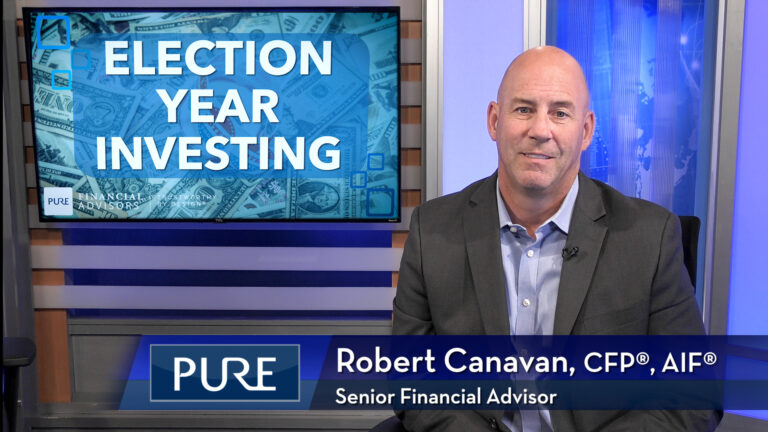A lot of people find themselves confused about the difference between Medicare and Medicaid. Pure Financial’s Chief Financial Planning Officer, Susan Brandeis, CFP®, goes over what the differences are, who is eligible, and what you get with each – making it a little easier to understand so you can decide which coverage is right for you.
FREE GUIDE | Medicare Checkup Guide
Transcript
Medicare vs. Medicaid.
Today we will be going over the difference between Medicare and Medicaid. In a nutshell, Medicare is a Federal health insurance program for people age 65 and older, and Medicaid is a Federal medical assistance program that is run by the states for low-income individuals at any age.
Now, who is eligible for Medicare?
Most U.S. citizens over age 65 will qualify as an individual or whose spouse that paid into Medicare for 10 years. Some non-U.S. residents age 65 who have been granted permanent residency may qualify. Individuals with qualifying disabilities or diagnose of permanent kidney failure can qualify at any age.
Who is eligible for Medicaid?
It depends on what state you live in. In all states, Medicaid provides medical coverage for some low-income individuals, pregnant women, elderly, and people with disabilities. In certain states, it may cover all low-income individuals below a certain income level.
So, what do I get with Medicare?
Part A, Hospital stay, is normally free for most individuals, and there is a yearly deduction and stays over 60 days have an additional cost. Part B, Outpatient, has a premium cost that is dependent on how high your income is. Part D Prescription Drug is an optional prescription drug plan, and it has a premium cost that is dependent on how high your income is. There is also Medicare Advantage Part C, which combines Part A and Part B and usually part D into one plan through a private insurer. It also has some additional premium costs. Lastly, there are Medicare Supplemental plans, also known as Medigap, that can layer on top of Part A and Part B to provide stronger deducible coverage, which covers the “gaps” that Part A and B don’t.
Now, what do I get with Medicaid?
For all states, individuals or families who qualify for Medicaid receive medical coverage for little cost. In some states, there is no cost for medical care through Medicaid. Now, Medicaid does not pay money directly to you. Instead, it sends the payments directly to the healthcare provider who provided the service.
In planning for retirement, it is important that you include known costs of health care, like your Medicare premiums and out-of-pocket expenses, within your retirement cash flow plan. But it doesn’t end there, a well-planned retirement should also include a long-term plan to spend more on health-related expenses throughout your life, as these expenses can become one of the largest draws of your financial resources.
Subscribe to our YouTube channel.
IMPORTANT DISCLOSURES:
• Investment Advisory and Financial Planning Services are offered through Pure Financial Advisors, LLC, a Registered Investment Advisor.
• Pure Financial Advisors LLC does not offer tax or legal advice. Consult with your tax advisor or attorney regarding specific situations.
• Opinions expressed are subject to change without notice and are not intended as investment advice or to predict future performance.
• Investing involves risk including the potential loss of principal. No investment strategy can guarantee a profit or protect against loss in periods of declining values.
• All information is believed to be from reliable sources; however, we make no representation as to its completeness or accuracy.
• Intended for educational purposes only and are not intended as individualized advice or a guarantee that you will achieve a desired result. Before implementing any strategies discussed you should consult your tax and financial advisors.
CFP® – The CERTIFIED FINANCIAL PLANNER™ certification is by the Certified Financial Planner Board of Standards, Inc. To attain the right to use the CFP® designation, an individual must satisfactorily fulfill education, experience and ethics requirements as well as pass a comprehensive exam. Thirty hours of continuing education is required every two years to maintain the designation.














